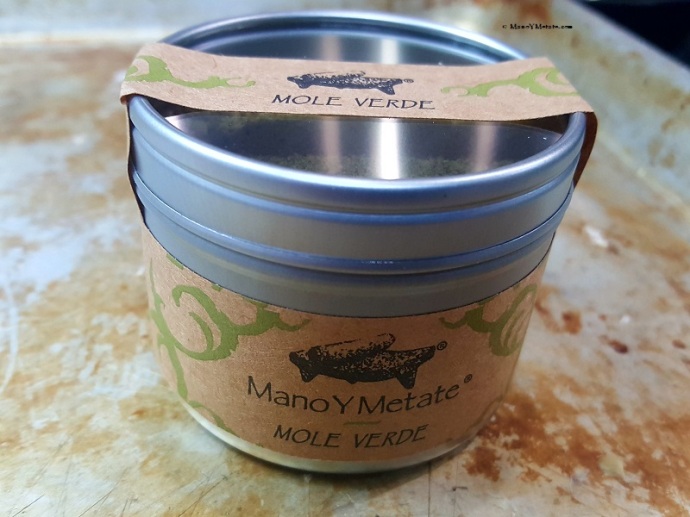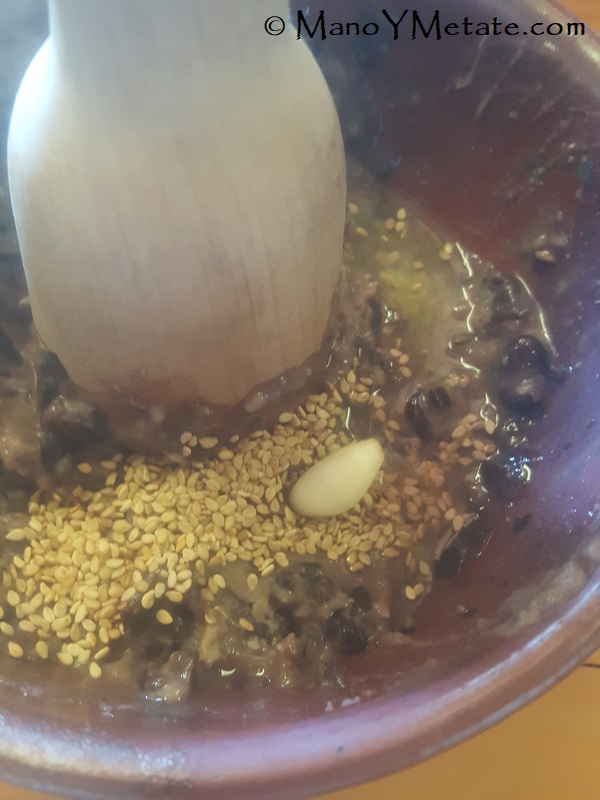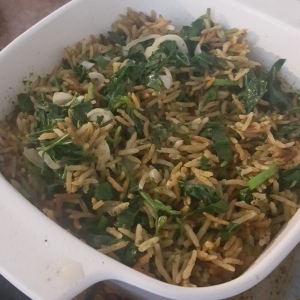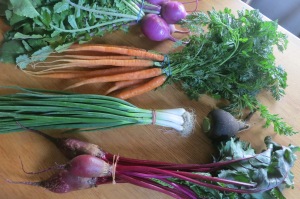
This epazote plant has grown to over 6 feet. It was a volunteer in the lettuce bed and loved the rich soil.
Carolyn here this week. This spring I have had epazote sprouting between my tomato plants, epazote in the pea pots, epazote in the kale and in the I’itoi onions. I harvested the last of the chard today and there was an epazote plant hiding in that row. For fun, I left one in the lettuce patch and it has grown over 6 feet, thriving in the rich soil and organic inputs in that area. After taking a picture today, I’m going to pull it before it releases a couple thousand seeds and takes over my entire garden.
I bought my first epazote plant from a lovely Mexican woman at the farmer’s market. That one died, but I tried again the next fall. This time I was more successful and now I can supply epazote to anyone who needs it.

Healthy epazote plant earlier in the spring.
Epazote is a New World herb that originated in Central America and parts of Mexico and in the Nahuatl language is called epazo-tl. It has spread north to the U.S. and to the Caribbean. The scientific name was formerly Chenopodium ambrosoides but has been changed to Dysphania ambrosoides. Interestingly, it is related to quinoa, spinach and beets.
Epazote is used as an flavoring herb and its taste changes slightly as the plant ages. Chew on a leaf of a young plant and you will notice a light citrus-y flavor that starts on your tongue and spreads through your mouth. Leaves from older plants intensify the pine-y or eucalyptus flavor notes that underlie the citrus. Some say it tastes similar to tarragon.
In the Southwest, epazote is most frequently used in cooking black beans for flavor and also for its anti-gas effects. Add two or three sprigs during the last 15 minutes of cooking. If you have access to fresh epazote, feel free to try it in other dishes. A little chopped up in a corn relish adds a spritely flavor. If you make your own mole sauces, add a few leaves, particularly to a green mole. It also goes well in filling for tamales and sprinkled on the cheese in quesadillas
Another traditional use of epazote as developed by the native Mayans is as a tea, particularly as a remedy for intestinal parasites. Epazote includes 60-80 % ascaridole, which is toxic to several intestinal worms.

Herbs for Mole Verde from left: epazote, parsley, oregano, and cilantro.

Here are the vegetables you will use: tomatillos, onion, garlic and jalapenos.
As with most leafy greens, epazote also provides some vitamins and minerals including vitamin A, B-complex vitamins (specifically folic acid) and vitamin C as well as calcium, manganese, copper, potassium, phosphorous and zinc.
Mole Verde
Here’s a recipe for a delicious green mole with epazote. This is a chewy, substantial version due to the pepitas. I served the sauce with sautéed chicken breast pieces and fresh nopalitos from my garden. Makes about 6 generous servings.
Ingredients
1 cup pepitas (hulled pumpkin seeds)
1 cup roughly chopped white onion (about 1 small)
1 tablespoon minced garlic (about 3 medium cloves)
1 tablespoon vegetable oil
1/2 pound tomatillos, husked and cut in eighths (about 5 large)
2 medium jalapeño peppers, roughly chopped (seeds removed for a milder sauce)
1 cup packed coarsely chopped fresh cilantro leaves and tender stems
1/2 cup packed coarsely chopped fresh epazote
½ cup parsley leaves
2 tablespoons fresh oregano
2 cups low-sodium chicken stock, divided
Salt, to taste
Directions

Saute the onion, garlic, and tomatillos until soft.
- Prepare all your herbs first and set aside. In a medium heavy skillet over medium-high heat, toast pepitas until they start to pop and turn a light golden brown. Toss constantly so they won’t burn. Transfer to a blender and process until finely ground. You will have to stop the blender every few seconds to redistribute the contents.
- In a heavy saucepan, heat the oil and sauté the onion until it starts getting translucent. Add the garlic and cook another minute. Add the tomatillos and jalapeno and cook, stirring frequently until soft.
- Transfer the sautéed vegetables to the blender jar with the pepitas and the herbs. Add one cup of the chicken stock and puree until well combined. This may take a couple of minutes.
- Return the blended mixture to the saucepan and put it over medium heat. Meanwhile rinse the blender jar with the remaining cup of chicken broth and add to the pot. Reduce heat and simmer for 10 to 15 minutes to let the herbs release their flavors and the flavors to blend. Stir frequently.
- Use immediately or transfer to an airtight container and store in refrigerator for up to 3 days, reheating before use.

Serve the sauce with chicken, fish, or vegetables.
_____________________________________________________
You can buy seeds for epazote from Native Seeds/SEARCH. They also carry a selection of cookbooks by Carolyn Niethammer. The books are also available online from Amazon and Barnes&Noble.



















































































